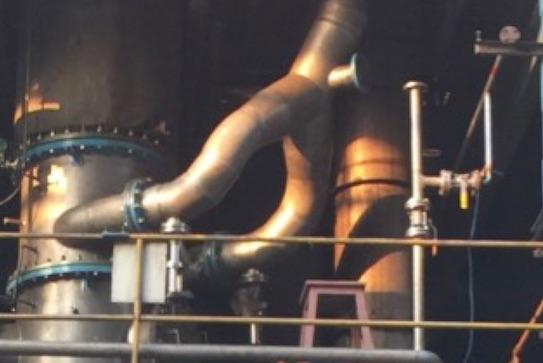Our technology and engineering company specialises in custom solutions for industrial heat exchangers by means of an innovative self-cleaning technology. We have designed and manufactured configurations for projects in all manner of industries with the aim of zero-fouling.
Revamped Forced Circulation Evaporator
Revamp of the 1st effect of a 4-effect evaporator train into a self-cleaning configuration. After taking the plant back into operation, the evaporation capacity kept is constant, which results in increased production, lower downtime & reduced maintenance cost.
Forced Circulation Re-boiler Proprietary Process Liquid
This forced circulation re-boiler is for more than 20 years in operation. One annual inspection replaces cleaning every 4 to 5 days. A significant cost saving results from the higher recovery of the acetic acid and the more concentrated residue in the bottoms.
Forced Circulation Evaporator Waste Water Stream
vacuum evaporator, installed in 1997 and still in operation, increases solids concentration of stillage resulting from Shochu distillation. Use of self-cleaning heat exchanger makes it possible to further increase concentration of stillage when compared with other technologies.
Heater Zinc Phosphate Solution
This self-cleaning heat exchanger is installed at a plant of a manufacturer and supplier of iron and steel (products) in Turkey. The self-cleaning heat exchanger is used to keep the temperature of a zinc phosphate bath constant in which steel components are treated with a zinc phosphate coating.
Quench Water Cooler
Four self-cleaning heat exchangers have been installed to cool quench water of an Acetylene Plant, which resulted in a reduction of number of cleanings to zero, a reduction of heat transfer surface with a factor 5, an increase in the heat transfer with a factor 2 and a decrease in required pumping power with a factor 2.
Recovery Of Sodium Sulphate In A Heat Exchanger
THE KLAREN self-cleaning heat exchanger technology has improved the plant’s performance significantly by preventing fouling and keeping the tubes in the first effect clean. Multiple inspections, in the first year after installation, confirmed that the tubes remained clean.







